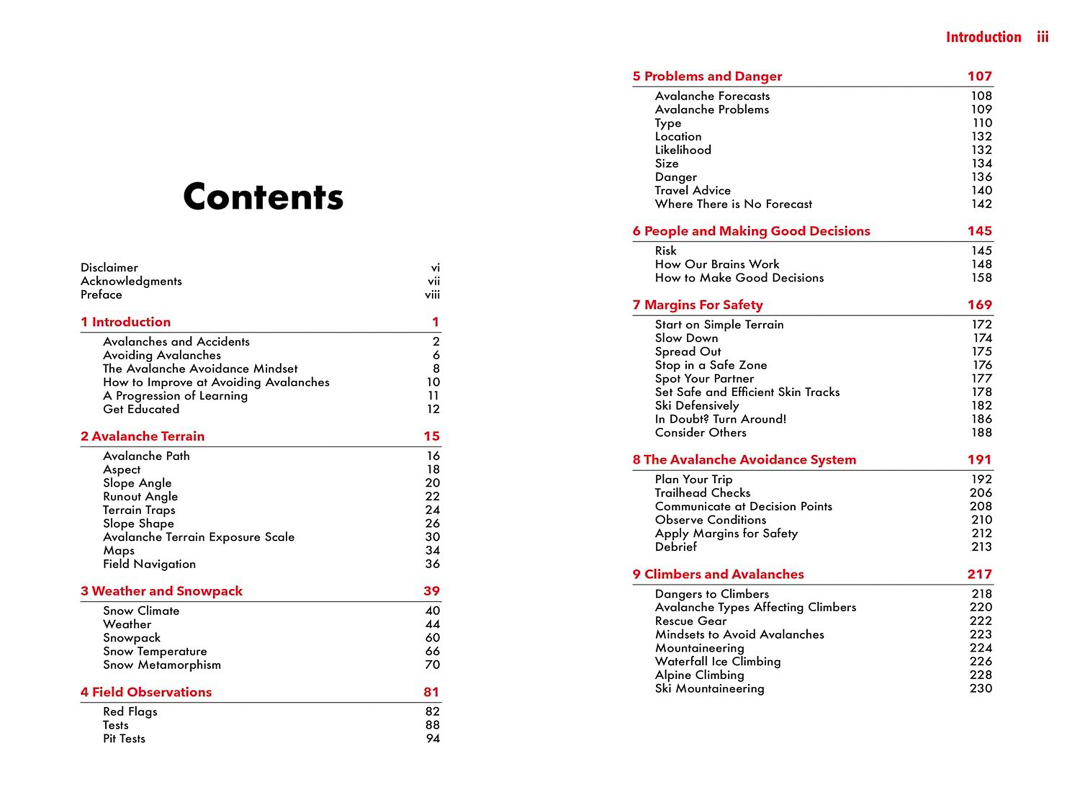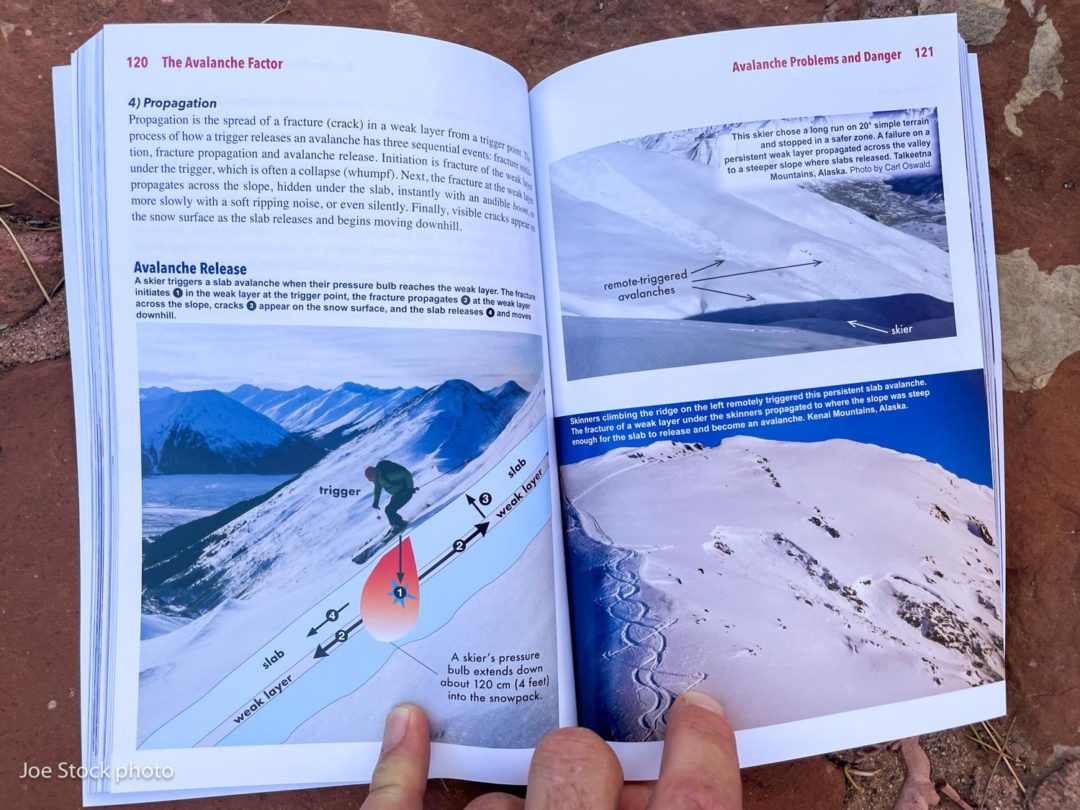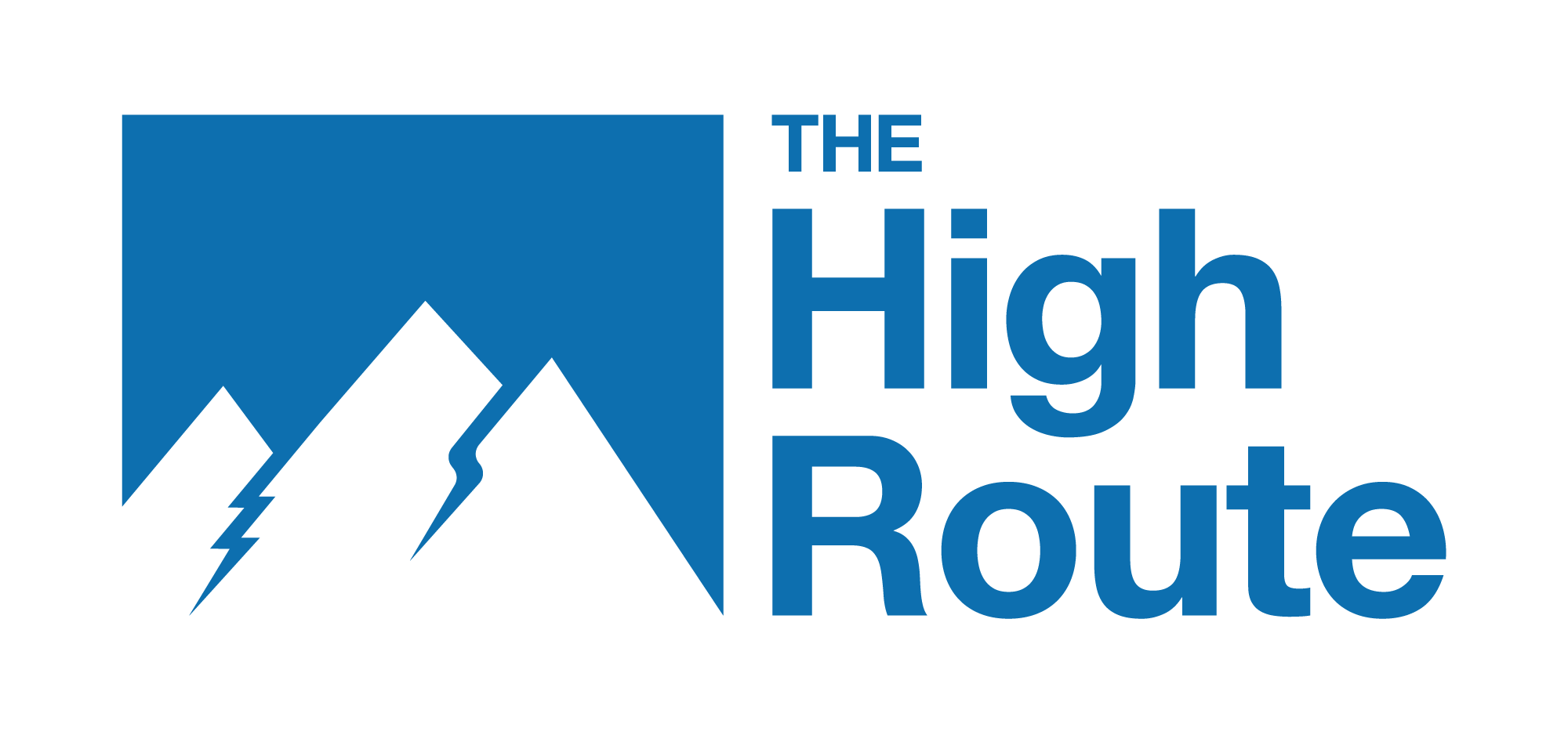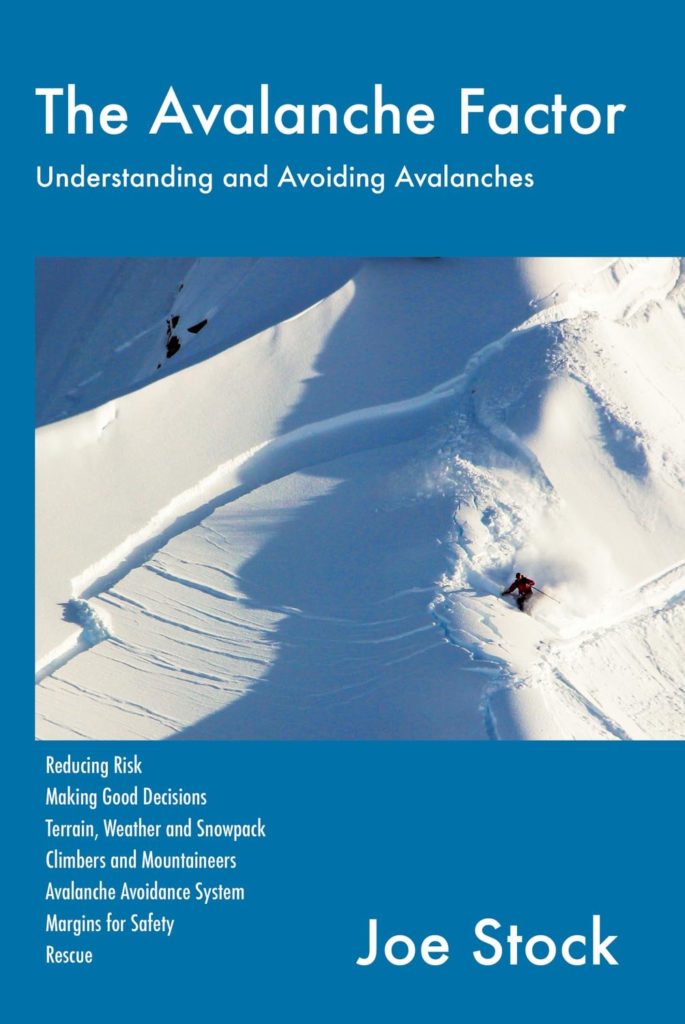The Avalanche Factor by Joe Stock is a recent addition to the avalanche education library. The book is accessible and informative and a reminder of the complexities of traveling safely in the wintertime backcountry.
In his introduction to The Avalanche Factor, Stock writes, “If you are interested in Avalanches, this book addresses two questions: Why do people get caught in avalanches? and How can we avoid getting caught?”
Those questions, ultimately, pivot toward who the book’s potential readers are. Let’s get this out front—any backcountry tourists should be reading this book since, by default, you should be interested in the two foundational questions posed and answered in The Avalanche Factor. Stock, an IFMGA guide and author of The Alaska Factor Backcountry Skiing in Southcentral Alaska, comes with the real-world experience and writing skills to tackle a wide-ranging and challenging task such as rendering all things avalanche (outside of deep academic articles) into a book.
First, think of this book as something other than a page-turner. That sentiment is not a disqualifier; it signals to potential readers that there is a ton of material to digest, page after page, chapter after chapter. So much so that The Avalanche Factor serves two seemingly disparate functions regarding books: textbook-dense (in a good way) and readable. It is a must read and a good read.

A glance at the content page (1 of 2) reveals the broad scope of topics covered in The Avalanche factor.
Stock organizes the book into digestible chapters that build on one another but are also solid as standalone bites. But, this over 300-page book, at least for me, was most useful when the bite size was limited to 10-15 page nibbles—this, to keep the metaphor rolling here, is because the nibbles are calorie-dense. In other words, each two-page layout packs a ton of avalanche education. Along with the useful and clear text, each page usually contains a diagram or a photo (or two) to highlight a salient point.
Good educators know they must provide students with multiple ways to “access” content. Stock’s reliance on diagrams, charts, graphs, and photos are the tools with which Stock allows avalanche education students numerous ways to access the content. Absent video, this is a traditional book after all, readers should come away with a better understanding of the introduced concepts and an increased ability to demonstrate knowledge after suitable experience in the field.
For the emerging avalanche student, the book is so nearly complete that accompanying online videos to support one’s “access” to content isn’t necessary unless you prefer videos. Maybe producing supplemental videos will be in Stock’s future to augment The Avalanche Factor’s offerings, but we did not inquire about that.

Each two page spread in The Avalanche Factor offers several different methods to better understand the content. Photo: Joe Stock
The Audience
The Enthusiast
After three decades of ski touring, I still feel anxious about my ability to assess a snowpack this time of year. I habitually read avalanche forecasts. I live in a region where we commonly have a relatively stable and predictable snowpack—this may be why I feel like I’ve lost an edge or a bit of sharpness. Further, I perceive myself as someone who chooses partners wisely, tries to make good decisions, and has a decidedly large aversion to FOMO fever. Which is to say, I’m fine skiing low angle low quality snow if it means I’ll smile and be able to come back another day when a line is in better—read safer— condition. Still, I continually need new educational inputs to make me a wiser backcountry traveler.
At $30, this is a massively cost-effective means to meet my educational needs. (Although Stock offered to send a review copy, I gladly paid for it—his is an independent operation and we like supporting these kinds of things.)
The Newcomer
This book is also a must-read for those new to backcountry skiing who have yet to enroll in their first avalanche class. Will you be an expert after reading The Avalanche Factor? (That’s a rhetorical question.) This much is certain: familiarizing yourself with the terms and concepts used in the backcountry will improve your learning outcomes during that first avalanche class. That noted, if you are a newcomer, learn about skinning and your basic equipment before enrolling in the first class, too.
After your first class, Stock’s book will continue to bestow nuggets: my guess is you’ll keep it by the bed as a reference tool anytime you seek a concept refresher. The book is comprehensive in scope. If the interest is there, and you desire to go deep on any topic Stock discusses, the Internet has many excellent avalanche education resources (including videos) to support your continuing education.
The Expert
Well, I’m no expert. (See enthusiast section above.) Yet, after spending a week with experts at the Bend 2023 International Snow Science Workshop (ISSW), I at least breathed the same conference room air. Osmosis anyone?
I cannot say if an expert would scoff at the book and see it as too reductivist. However, suppose you are an avalanche forecaster or educator. In that case, it’s likely a good idea to understand what the users of your forecasting products and the students in your classes, respectively, are reading.
In closing, if you are itching for more avalanche education information, Stock provides a list of references used for researching topics presented in The Avalanche Factor. You can order the book online from Stock Alpine for $30 + shipping.

